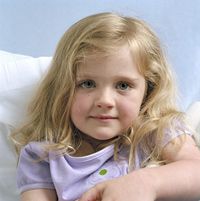Contact the Blood Donor Center
Blood Donor Center
St. Jude Children’s Research Hospital
262 Danny Thomas Place
Memphis, TN 38105-3678
- Phone: 901-595-2024
- Toll-Free: 866-278-5833, ext. 2024
- Email: BloodDonor.Recruiters@stjude.org
St. Jude Family of Websites
Explore our cutting edge research, world-class patient care, career opportunities and more.
St. Jude Children's Research Hospital Home

Interesting facts regarding blood product donation at St. Jude:
Whatever type of donation you choose to make, know that you can directly help a child at St. Jude.

The following was written by Fran Shaw, Brenan Jane Rodgers' mother. Brenan was diagnosed with severe combined immune deficiency when she was three months old. For much of her seven-month stay at St. Jude, she was dependent upon daily blood transfusions to stay alive. We think you'll be inspired by her story.
"Brenan was diagnosed with SCID [Severe Combined Immune Deficiency] or "the bubble boy disease" at 3 months of age. When the doctors at Le Bonheur [Children's Medical Center] referred her to Dr. [Mary Ellen] Conley at St. Jude, I knew that it was life-threatening. I immediately thought she was going to die. Basically, Brenan was born without an immune system. Everything she came into contact with was contagious to her. A simple cold could have been fatal to her.
"She was put in strict reverse isolation. The doctors told me that Bone Marrow Transplant was the only treatment and her only hope and without it, she would not live past the age of 2.
"She was admitted to St. Jude on January 12, 1999, to undergo 10 days of chemotherapy and bone marrow transplant with her dad as the donor. At the young age of 7 months, she began chemo and was transplanted February 25, 1999. The chemotherapy depleted her old marrow, which is made up of white blood cells, red blood cells, and platelets. Which basically meant her body was not producing blood or platelets so she had to have daily transfusions until her new marrow started producing its own. There were many times that they came to us and said there were no platelets and they had to go to an outside source to purchase them, which took time. In the meantime, we would have to make sure she didn’t kick the bed or fall because platelets are your clotting agent and if she would have injured herself, she could have bled to death.
"Blood and platelets are very important at St. Jude. Every patient needs them at one time or another on a regular basis. In Brenan’s case, her body wouldn’t accept the new marrow and therefore couldn’t produce blood, platelets, or immune cells. She was blood- and platelet-dependent for about 3-4 months. Brenan had three bone marrow transplants and her body finally accepted the new marrow. At 14 months of age, Brenan was discharged to go home. She didn’t know her brothers or sister, had never felt grass on her feet, had never seen a bird or a puppy, and had never gotten to play with other children.
Fran Shaw
Brenan Jane Rodgers' mother
Blood Donor Center
St. Jude Children’s Research Hospital
262 Danny Thomas Place
Memphis, TN 38105-3678